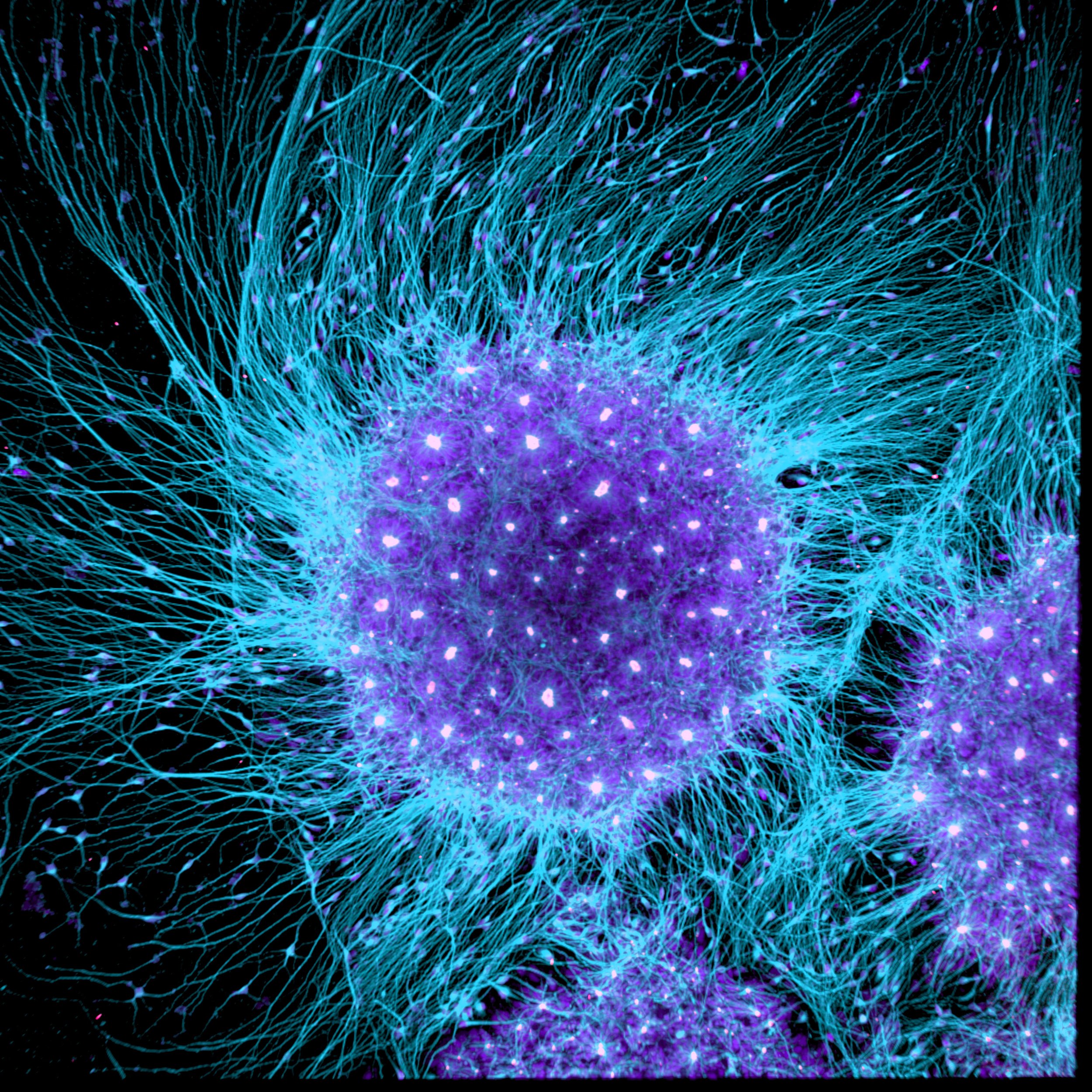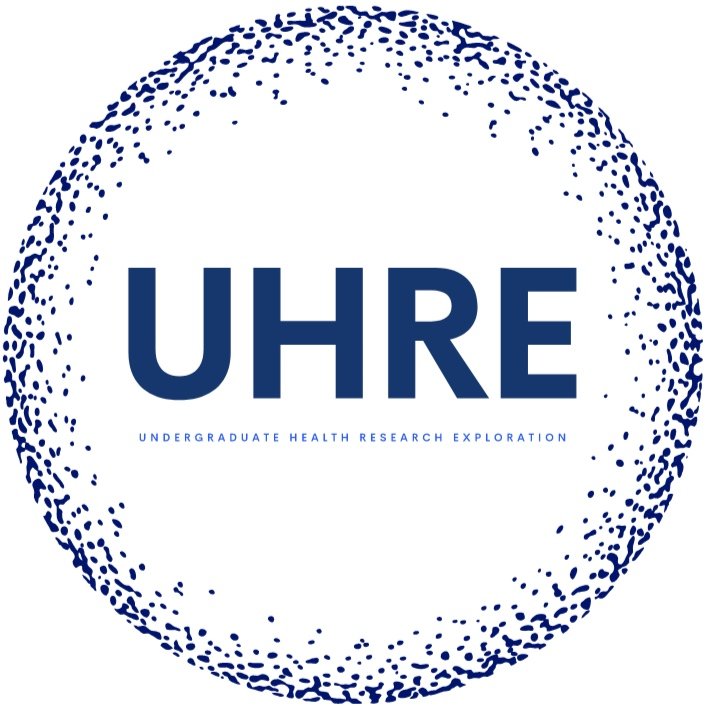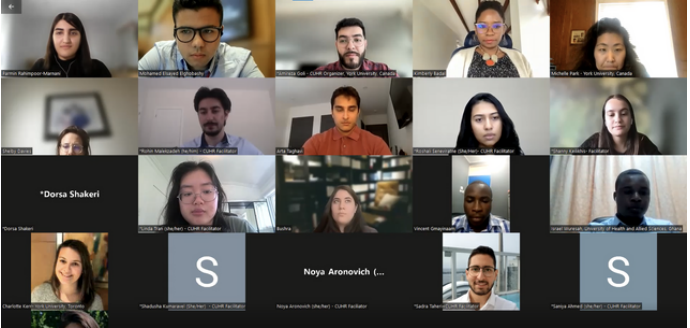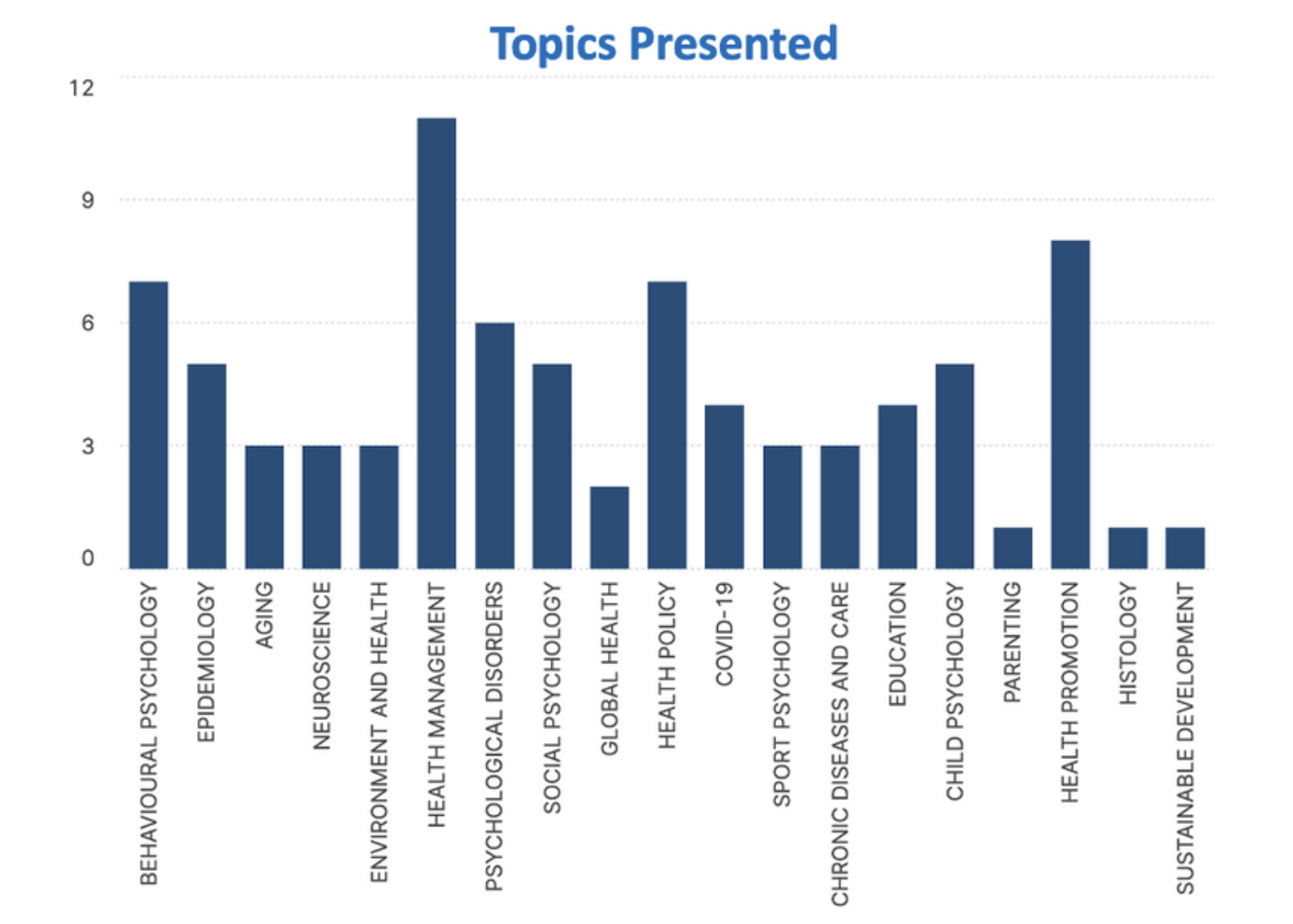
The Conference for Undergraduate Health Research (CUHR) 2022
Canada’s first Health-Focused undergraduate research conference.
CUHR 2022 Conference Theme: Agents of Change
On May 27th and 28th, 2022, UHRE ran its first annual Conference for Undergraduate Health Research (CUHR) with over 80 presenters from 12+ nations.
In its inaugural year, the Conference for Undergraduate Health Research at York University broke new ground by seamlessly transitioning into a virtual realm, redefining the boundaries of academic collaboration. Despite the challenges posed by the global landscape, the conference emerged as a resounding success, proving that innovation and scholarly exchange could thrive in the digital sphere.
The conference attracted a diverse array of undergraduate researchers not only from York University but also from around the world. Through virtual platforms, students connected across continents, sharing their research findings and engaging in intellectually stimulating discussions that transcended geographical distances.
The virtual format not only showcased the resilience of the academic community but also highlighted the adaptability of young scholars in navigating the complexities of online collaboration. Attendees were not just passive spectators; they actively participated in virtual poster sessions, live presentations, and interactive Q&A sessions, creating an immersive experience that mirrored the vibrancy of an in-person event.
Despite the physical separation, the sense of camaraderie and the spirit of intellectual curiosity prevailed. The success of the conference was further underscored by the enthusiastic response it garnered, proving that, even in a virtual landscape, the thirst for knowledge and the desire to connect with like-minded individuals remained unwavering.
As the first chapter of the Undergraduate Research Conference unfolded online, it laid the foundation for future iterations, setting a precedent for the integration of virtual elements in academic discourse. This pioneering event not only celebrated the accomplishments of young researchers but also signaled a promising evolution in the way we approach scholarly exchange in the digital age. The resounding success of the inaugural virtual conference at York University left an indelible mark, proving that innovation knows no boundaries, even in the realm of virtual academia.
Conference Awards
-
Valued at $250, the Research Excellence Award recognizes outstanding contributions to the field of health research by undergraduate scholars. This prestigious accolade honors individuals who have demonstrated exceptional dedication, innovation, and impact in advancing our understanding of health-related issues. The award celebrates the achievements of students who exemplify excellence in research within the dynamic and vital realm of health sciences.
The winner of the Research Excellence Award was Nurit Engelmeyer.
You can find their abstract below:Presenter: Nurit Engelmeyer
Title: Stopping the Stomach Ache: Transient Receptor Potential-Mediated Targeting of Activity Blockers Into Gut Nociceptors For Selective Blockade of Abdominal Pain
Abstract: Inflammatory bowel diseases (IBD) are a group of disorders characterized by intestinal inflammation manifesting as visceral pain, diarrhea, and impaired quality of life. Although there are numerous methods for treating gut inflammation, there are currently limited options for treating pain in IBD patients, necessitating the development of a strategy to alleviate visceral pain caused by these conditions. My project aims to understand the mechanism of IBD-induced pain and develop approaches for its treatment. Transient receptor potential TRPV1 and TRPA1 cation channels are known to mediate inflammatory pain. Prior attempts to block these channels have been unsuccessful due to dangerous side effects. Alternatively, our lab demonstrated that cationic derivatives of local anesthetics like QX314 can be selectively shuttled through active TRPV1 channels, selectively blocking somatic pain. We implemented this strategy to reduce visceral pain in a rodent model of IBD. We examined gut sensitivity by inducing colorectal distention and abdominal withdrawal reflexes were counted as a measure of gut sensitivity. Local application of QX314 together with capsaicin, a TRPV1 channel agonist used to activate the channels, blocked IBD-mediated gut hypersensitivity. Application of QX-314 into the colon of naïve rats did not affect pain sensitivity. Importantly, when we applied QX-314 alone into the inflamed gut, inflammatory-mediated abdominal pain diminished. These findings suggest that during gut inflammation, TRPV1 and TRPA1 channel are activated by proinflammatory factors and this activation is sufficient to allow the selective entry of the local anesthetics into pain-related neurons, blocking their activity and reducing inflammatory pain. We are examining this hypothesis using selective antagonists of TRPV1 and TRPA1 channels. These results would contribute to our understanding of the disease and pain mechanism in IBD offering a solution for localized pain relief in IBD patients.
-
Valued at $250, the Best Research Proposal Award acknowledges the most outstanding and promising research proposals put forth by undergraduate participants. This accolade celebrates the meticulous planning, creativity, and scholarly potential demonstrated in crafting a compelling and impactful research proposal within the field of health sciences. It recognizes individuals who exhibit exceptional promise in their approach to addressing crucial health-related questions and encourages further pursuit of excellence in research endeavors.
The winner of the Best Research Proposal was Yvonne Ping.
You can find their abstract below:
Presenter: Yvonne Ping
Title: Developing Ex-Vivo Culture System of Mouse Uterus
Abstract: The study of embryo implantation and development in vivo is hindered by significant barriers. Non-invasive longitudinal imaging can provide insight into fetal development and health. However, high-resolution imaging methods require removing the embryo/fetus from the uterus. Isolation and growth of post-implantation fetuses have proven difficult, and dissection with in vitro culture negates studying fetal-placenta-uterus interactions. An ex-vivo culture method that maintains a uterus for an extended timeline would greatly aid in studying embryonic development. This project involves developing an ex-vivo perfusion system to maintain a mouse uterus for three weeks (average gestation time). Additionally, it involves determining the ideal growth conditions and culture medium for a mouse uterus. For this, the uterus is isolated, and the abdominal aorta is cannulated and connected to a bioreactor previously developed by the Rogers Lab for the kidney, pancreas, and lung. The culture media will be STEEN solution which has successfully been used in other organ cultures. To meet the metabolic needs of the uterus, hemoglobin and nutritional supplements will be added. Essential amino acids, a stable glutamate-GlutaMax, and low-density lipoproteins will be supplemented to aid with organ survival. The performance of ex-vivo cultured uteri will be studied by measuring oxygen consumption using PresensTM oxygen sensors at the aorta and vena cava. Preliminary results show that aortic cannulation leads to successful perfusion of the uterus and ovaries. Attempts to fully isolate and transfer the uterus, ovaries, and associated vasculature to the growth chamber have been successful. The longest culture period to date is 3 days and experiments are underway to extend this period. This ex-vivo system will support the growth of the whole uterus throughout pregnancy, enabling the study of fetal-placenta-uterus interactions and development in real-time which are currently inaccessible both in situ and in vitro.
-
Valued at $350, and supported by the founding dean of the Faculty of Health at York University, Dr. Harvey Skinner, the Harvey Skinner Research Impact Award was awarded to the student whose work best exemplifies the theme “Agents of Change”. Students who have used their research as an inspiration to create initiatives or contribute to their community were best eligible for this award. This award was open to all students, and we gave presenters the opportunity to share how their work has had a positive impact!
The winner of the Harvey Skinner Research Impact Award was Israel Wuresah.You can find their abstract below:
Presenter: Israel Wuresah
Title: Long-lasting Insecticidal Nets Ownership And Malaria Morbidity In The Krachi East Municipality, Ghana
Abstract: Malaria-related morbidity and mortality are issues of great concern to public health globally, though many cases reside within Sub-Saharan Africa. Millions of people, especially children, and pregnant women suffer severely from malaria. Seasonal chemoprevention, indoor residual spraying, and nationwide and point distribution of LLINs are among the measures deployed in Ghana. However, reports from OPDs indicate millions of malaria cases annually. The study aimed at identifying the levels of ownership and usage of the treated bed nets, and describing the relationship between ownership of LLINs and malaria morbidity. The 30-cluster sampling method was deployed, where a modified WHO EPI survey method for more rural areas, and a random walk sampling for more urban areas, were used to sample households within specified clusters. Selected households’ heads/representatives were interviewed. Ownership of LLINs was high (73.4%) but a moderately low usage level (49.5%) was identified. Aside from sleeping under them, participants (22.9%) had other uses for the LLINs. Malaria morbidity was found to be 59.6%. The female sex [AOR = 2.1 (95% CI: 1.15, 3.87) p=0.016], married couple [AOR = 3.4 (95% CI: 1.76, 6.74) p<0.001], cohabitants [(AOR = 6.1 (95% CI: 2.15, 17.02) p=0.001] and separated or divorced partners [AOR = 9.4 (95% CI: 1.09, 81.27) p=0.041] were more likely to own a bed net. Also, usage of the bed net increases as ownership increases. The usage of the bed net was poor despite a high ownership rate. The study recommended service points and periodic household and/or community sensitization on LLINs usage as measures to increase usage levels.
Photos
CUHR 2022 Itinerary and Abstracts
If you are interested in reading the abstracts from CUHR 2022, you can access them here.
Subscribe for Updates
Questions?
Contact us at uhreyorku@gmail.com or through the Contact page on our website for any questions about CUHR, or the Undergraduate Health Research Exploration program.



